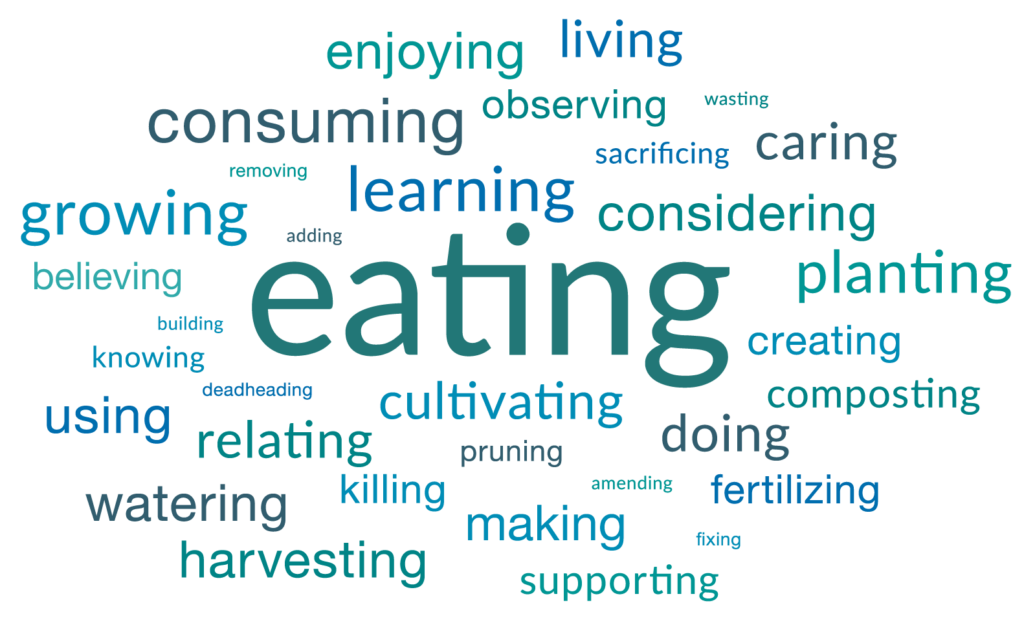What we already know
The majority of food available to us is heavily processed and shipped long distances. Conventional produce has often been sprayed with chemicals that may cause cancer. We know that diets high in fresh produce are healthier, and many consumers demand organic options. Locally-produced food is generally fresher, and prevents large transportation costs, including the pollution that transportation generates. CSAs are growing, farmers’ markets are booming, and community gardens are popping up all over the city. We’re moving (slowly) in the right direction.
We know climate change is real. We know monoculture crops are particularly vulnerable to the effects of climate change. And we know that the political climate directly affects environmental regulations and therefore the quality of our air, water, soil, and food. Now is the time to take action. Now is the time for every single one of us to improve the way we eat.
But why should I grow my own food?
Growing your own food is a patriotic and revolutionary act. When you grow your own food, you have greater control over what ends up on your dinner plate. You can pick the varieties you like best, you can use organic methods, you can eat the veggies at their peak ripeness. Nothing tastes better than a freshly picked vine-ripened (in my opinion Brandywine) tomato.

If you are a CSA member or buy produce at a farm stand, growing a few of your own edibles is a great complement. The CSA and farm are indeed local—which is great!—but nothing’s more local than your back door. And maybe they don’t grow your favorite hot pepper. At the height of the harvest, vegetables like snap peas and string beans should be picked every few days. You can claim your bounty at its absolute peak.
When’s the last time you bought a head of lettuce with a few brown leaves? How about a strawberry with a mushy spot? An oddly shaped tomato? We demand visual perfection from the produce we buy, and as a result, we waste a lot of perfectly good food. You are probably more forgiving with edibles you grow yourself. You’re likely to pull off (and compost) the brown lettuce leaves, cut out the mushy strawberry spot, and use the tomato anyway. Let’s embrace imperfection and reduce waste!
You can make our ecosystem healthier
By growing more of your own food, you add more green to our city, which not only looks nice, but also helps improve air quality. Adding new garden beds and containers chips away at the ubiquitous concrete surfaces that perpetuate our ongoing runoff problem. Your garden can enhance biodiversity, feed pollinators, and improve your own connection to the natural world that surrounds us. And fresh produce is just plain yummy.






